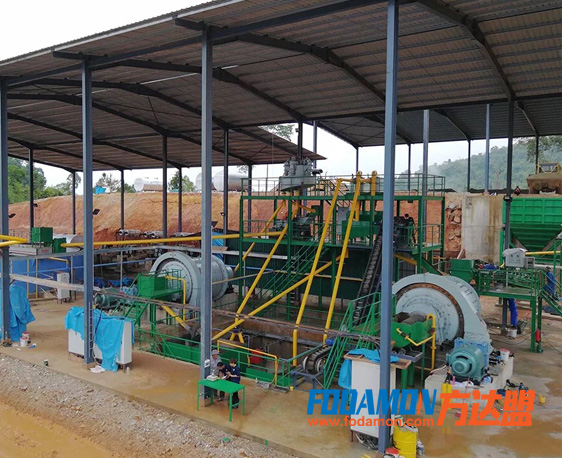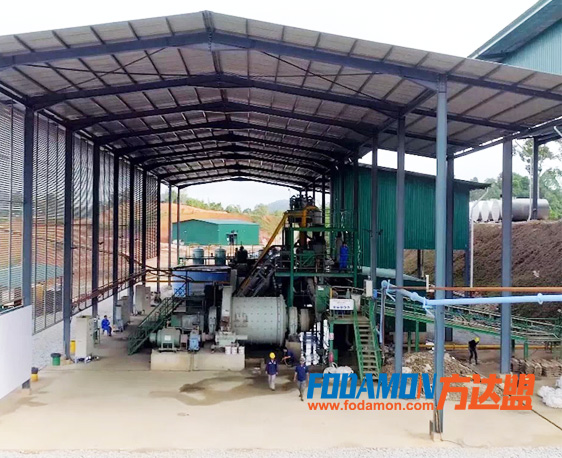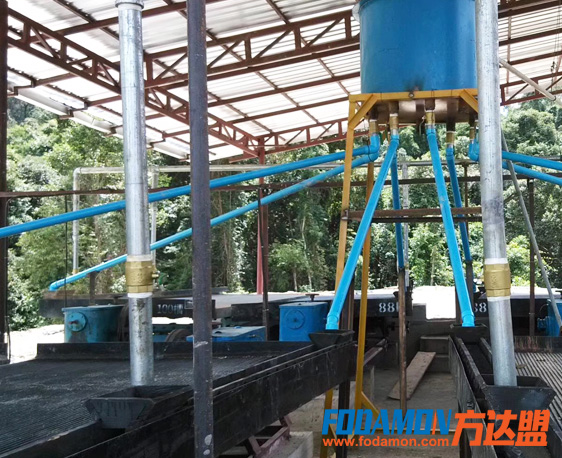It is generally believed that only when the rock ore and placer reach the following content can they have industrial mining value. Fodamon engineers summarize as follows. The content of TiO2 in ilmenite is between 10% – 40%, or the content of TiO2 in rutile is more than 3%; the content of ilmenite in placer is more than 15kg/m3, or the content of rutile is more than 2kg/3; some associated paragenesis ores with various valuable components can be considered comprehensively even though the grade of TiO2 is lower.

Generally, ilmenite is mixed with many waste sandstone and composite other minerals, and its TiO2 grade is low. Beneficiation is to separate Ilmenite from these minerals by different beneficiation methods according to their different compositions and physical and chemical properties, so as to improve the grade of TiO2. Because ilmenite is often associated with many minerals, it is difficult to get ilmenite concentrate with high TiO2 grade and few impurities by a single beneficiation method. In order to improve the grade of TiO2, it is necessary to select different beneficiation methods and combinations repeatedly according to different kinds of ores, so as to achieve the ideal effect.

Ⅰ. Mineral processing of rock and ore
The rock ore is mainly titanium bearing compound iron ore, which has dense structure and is difficult to be mined and selected. The general beneficiation process can be divided into the following stages.
- Preselection
In order to improve the beneficiation capacity, improve the beneficiation grade and reduce the cost, some tailings will be discarded after beneficiation of the mined rock ore. - Iron separation
Iron concentrate or ferrovanadium concentrate for iron making can be obtained by separation of titanium bearing compound iron ore, and most of iron and titanium can be separated. Magnetic separation is commonly used in iron separation. - Titanium separation
Through multi-stage crushing and screening, according to different ore source components, the tailings after iron separation are selected by gravity separation, magnetic separation, flotation and other methods to improve the TiO2 grade of titanium ore.

Ⅱ. Mineral processing of placer Deposits
Due to the stable physical and chemical properties and relatively high density of ilmenite, it can be deposited in the process of scouring, transportation and hydraulic separation in rainy areas, enriched in the surface and riverbed, or washed to the river outlet and offshore by flood. Therefore, ilmenite is widely distributed in beach placer, riverbed placer, alluvial placer, residual slope placer and low-lying placer.
In the river bed, chain bucket conveyor, agitator suction conveyor or bucket wheel conveyor are often used to transport the placer to the mining ship for reprocessing.
On the beach, bulldozers, scrapers, loaders and bucket wheel excavators are often used to transport the materials to the roughing plant through belt conveyor or sand pump pipes.
The mined placer will be roughed out after slag removal, screening, grading, desliming and concentration. Yunnan mine is still wet grinded.
Coarse separation is based on the density of minerals. Gangue tailings with small density are discarded to obtain about 90% of heavy minerals with large density. Cone concentrators and spiral concentrators are commonly used. The coarse separation plant is mobile and often combined with mining.
Fine separation is to carry out gravity separation, wet magnetic separation and flotation in wet process, and then magnetic separation, electric separation and gravity separation in dry process.
